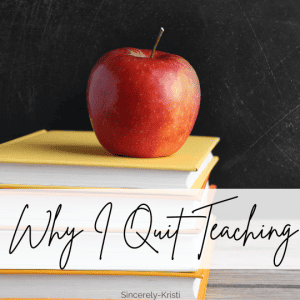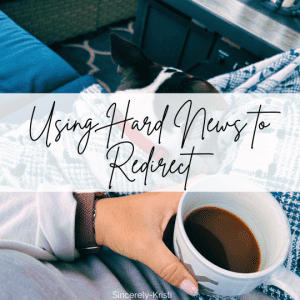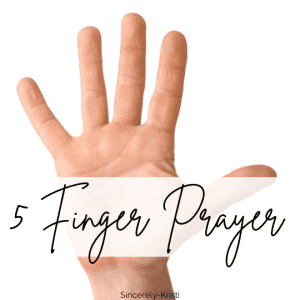SOAP- A Method for Understanding Bible Reading

Today I am going to share with you a simple method for Bible reading to help you understand what you are reading and how you can apply it to your life. The SOAP method is one of the most popular ways to help you grow in your personal relationship with your Heavenly Father. This prayer method is an excellent tool to help you start applying God’s Word to your life today!
{This post may contain affiliate links. This means that if you place an order using an affiliate link, I may earn a small amount of compensation at no cost to you.}
It can seem intimidating if you haven’t read the Bible before and you may feel like you don’t understand what you are reading. Using the SOAP acronym is a great way to help you to practice understanding what you are reading and help you apply what you are reading to your life.
We will go over what each letter in the acronym SOAP stands for and at the end, I will share a SOAP Bible study method example.
The most important thing to remember is that there is no wrong way to do your Bible study time. I believe that God is happy anytime we turn our attention to him!
When I started reading the bible on my own for the first time, it really helped to use a bible translation that was easier to understand, such as the NIV (New International Version) or NLT (New Living Translation). It also helped me to start in the New Testament. You can also try out the free YouVersion Bible app or website where you can do your Bible reading. It offers many different translations of the Bible and you can toggle between them until you find one that you like. The YouVersion Bible app also offers a free daily bible reading plan and is a great place to start if you are new to reading Scripture.
The Bible: What’s in there?
Well, there’s a lot in there! But we’ll start with this…
- There are 66 books inside the Bible and they are split up into two sections.
- The Old Testament consists of the first 39 books of the Bible and covers the time before Jesus’s birth.
- The New Testament is the second part of the Bible (27 books) and starts with the birth of Jesus.
- Approximately 40 authors contributed over a span of about 1,500 years.
- Another fun fact is that the first four books of the New Testament are referred to as the gospels, or “Good News.” They were written by Matthew, Mark, Luke and John. These books are grouped together because they all tell of the Good News about Jesus Christ.
The Bible is sometimes referred to as “The Living Word.” What on earth does that even mean?
There are many ways that the Word of God is considered to be “alive” and this is referenced several times throughout Scripture.
In Hebrews 4:12, the Bible speaks about the Word of God as being alive:
“For the word of God is living and active, sharper than any two-edged sword, piercing to the division of soul and of spirit, of joints and of marrow, and discerning the thoughts and intentions of the heart.” (ESV)
1 Thessalonians 2:13 says the word of God is at work in believers. 2 Timothy 3:16-17 tells us the Word of God corrects, teaches, prepares, and equips. The Psalmist in Psalm 119 praises its purity, its wisdom, and counsel.
If you would like to know more about the Word of God being “alive,” check out this article that gives more specific references and really goes into depth on the subject.

For this Bible reading method, we will use the acronym SOAP
I learned about this Bible reading template years ago and found it helpful. I hope you do, too!
Each letter in the acronym SOAP stands for a part of the method.
S= Scripture
O= Observation
A= Application and
P=Prayer
We will go through each letter and I will give an examples of one of my SOAPs at the end.
I cannot stress this enough- DO NOT worry that you are not doing it “right.” The SOAP method of bible study is just one strategy and is meant to gently guide you and give your time in the Word some structure. God rejoices when we spend time with him. He’s not keeping a score!
Let’s get started!
“S” is for Scripture
For the first step, choose a book of the bible, then choose a chapter (or half a chapter if it is long) and start reading.
As you are reading, pay attention for one or two verses that stand out to you from the bible passage. (You really want to choose only one bible verse or two verses to focus on.)
Those will be the verses that you will write down for your S. Write down the book, chapter and verse number(s), for example:
Matthew 2:1-2, where the first number is the chapter in the book of Matthew and the second numbers are the verses in chapter 2.
Then copy the verse into your journal or notebook. (See example below)
Next up is the “O”- Observation
For the second step, you want to read the verses surrounding your chosen verse and make some observations and put them into your own words. What is happening? Who is involved?
You’re trying to set the scene in your mind and get some context for your chosen verse.
I will sometimes use the notes under the verse in my study Bible or a website for more information about what was happening or historical background related to what is going on. I’m just a regular person and don’t have a seminary degree, so I just use my resources. Just be careful that you are choosing a reputable site if using the internet.
Write down a couple of sentences about what you Observe happening. (See example below)
“A”- Application Step
The next step is where you ask yourself, and God, how this verse and information can be applied to your life in a personal way. Did this verse stand out because you related to what the person in the verse is going through? Or maybe something that you have been thinking about in your own life?
For the A, write down how the passage of Scripture you chose and the observations you made could be applied to your life. (See example below)
And the last step uses “P” for Prayer
Lastly, we’re going to ask for God’s help. Ask the Holy Spirit to help you to understand what you read and to help you apply it to your life. Ask him to open your eyes on a daily basis to see the things that he wants you to see and to help with personal growth . Or ask for help with being more consistent with your quiet time or with understanding what you are reading.
Then write down a short prayer for your P. (See example below)
For more help with prayer, check out this post:
CHAT- A Prayer Template for When You Don’t Know What to Pray
Now it’s time to take a look at an example of all four parts of the SOAP method below and then give it a try for yourself!
This is an example of a SOAP exercise that I did on March 31, 2020. I started out by reading Galatians Chapter 1.

S- Scripture (Which 1-2 verses stood out to you the most?)
Galatians 1:23 – “They only heard the report: “The man who formerly persecuted us is now preaching the faith he once tried to destroy.” And they praised God because of this.”
O- Observations (What is going on in the surrounding verses?)
Paul had once tried to kill Christians. He learned of the faith through revelation from God on the road to Damascus (when he was still known as Saul.) He turned from his ways and began preaching the Good News. If God was able to intervene in Paul’s heart and mind in such a dramatic way, he can also change and renew my heart and mind and bring about change in my life if I seek him and allow him.
A- Application (How can I apply this to my life?)
I can be open to allowing God to change my heart, mind and attitude about things and for my actions to follow. I can rely on God to help me live a more Christ-like life.
P-Prayer (Ask God to help you apply to your life.)
Dear God,
Please help me to surrender the areas of my life in which I struggle or that don’t honor you. Help me release the struggles to you and allow you to change my heart and mind. I pray that actions to bring these areas into alignment with your will would follow. Please help me to be more like Jesus.
Amen.






